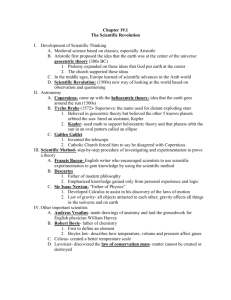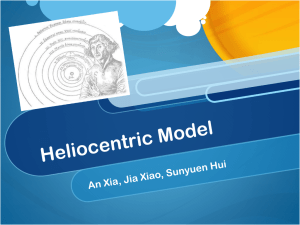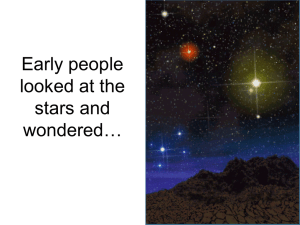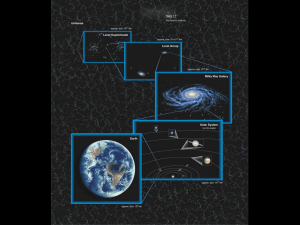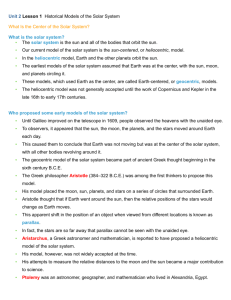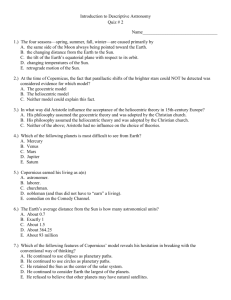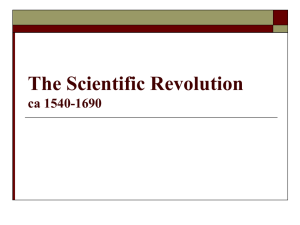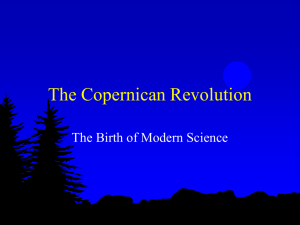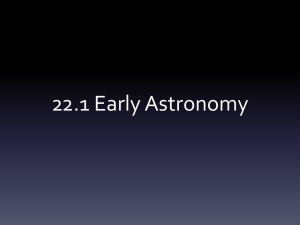Study Guide: Chapter 1 The Solar System
advertisement
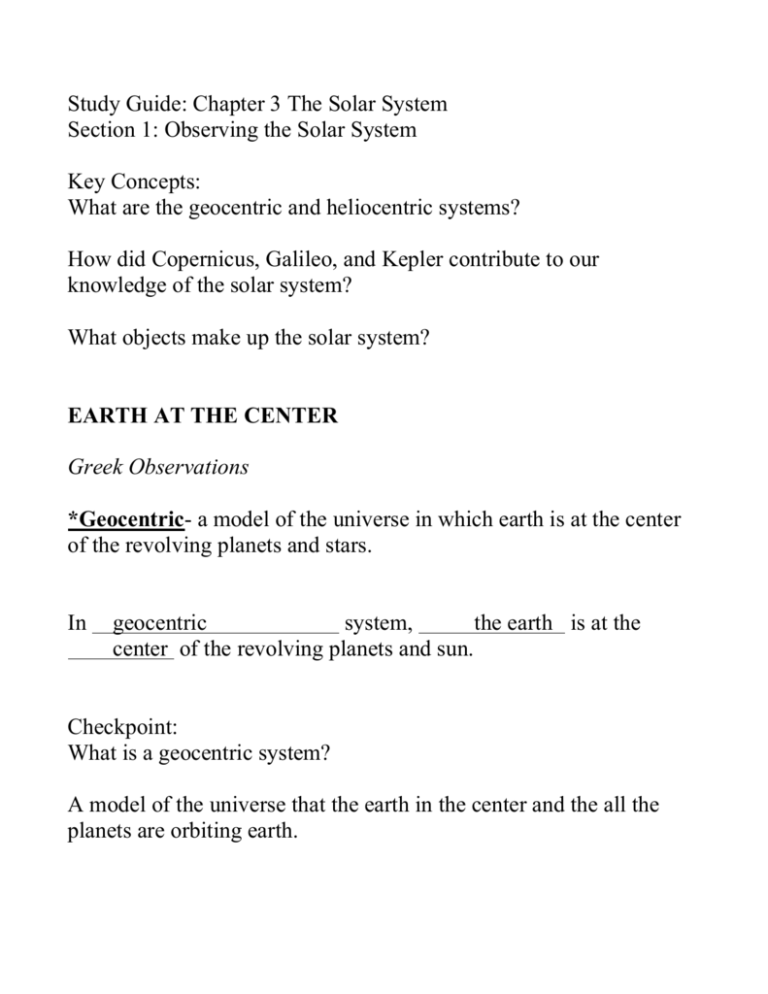
Study Guide: Chapter 3 The Solar System Section 1: Observing the Solar System Key Concepts: What are the geocentric and heliocentric systems? How did Copernicus, Galileo, and Kepler contribute to our knowledge of the solar system? What objects make up the solar system? EARTH AT THE CENTER Greek Observations *Geocentric- a model of the universe in which earth is at the center of the revolving planets and stars. In geocentric system, the earth is at the center of the revolving planets and sun. Checkpoint: What is a geocentric system? A model of the universe that the earth in the center and the all the planets are orbiting earth. SUN AT THE CENTER *Heliocentric- a model of the solar system in which earth and the other planets revolve around the sun. In a heliocentric planets system, Earth and the other revolve around the sun . The Copernican Revolution Copernicus was able to work out the arrangement of the known planets how they move around the sun. and Galileo’s Evidence Galileo used the newly invented the telescope make discoveries that supported the heliocentric model. Kepler’s Calculations to *Ellipse-an oval shape which may be elongated or nearly circular ; the shape of the planet’s orbit Kepler found that the is an ellipse orbit of each planet . Checkpoint: What is an ellipse? The circular shape of the planet’s orbit MODERN DISCOVERIES *Today we know that the solar system consists of the sun and nine planets and their moons , and several kinds of smaller objects that revolve around the sun. Checkpoint: Which six planets were known to the ancient Greeks? *Mercury, Venus, Earth, Mars, Jupiter, Saturn Section 1 Review (#’s 1-3) *1.a. What are the geocentric and heliocentric systems? In a geocentric system earth is in the center of the revolving planets and sun. In a heliocentric system earth and the other planets revolve around the sun. b. How was Copernicus’s model of the universe different from Ptolemy’s model? Ptolemy believed that the planets, moon and sun revolved around earth. Copernicus thought that the sun was in the middle and that the planets revolved around the sun. *c. What discoveries by Galileo support the heliocentric model? Moons revolving around Jupiter and the phases of Venus 2. a. How did Kepler use Tycho Brahe’s data? To describe the motion of the planets and determine the shape of their orbits. b. What did Kepler discover about the orbits of the planets? They are elliptical c. How did Tycho Brahe and Kepler employ the scientific method? Brahe observed and recorded his observations. Kepler used the evidence gathered by Brahe to form a hypothesis about planetary orbits. Then he made predictions and confirmed or revised his hypothesis on the basis of his observation. *3.a. What objects make up the solar system? The sun, eight planets, and their moons, and other smaller objects. *b. What are the nine planets, in order of increasing distance from the sun? Mercury, Venus, Earth, Mars, Jupiter, Saturn, Uranus, Neptune, Pluto

